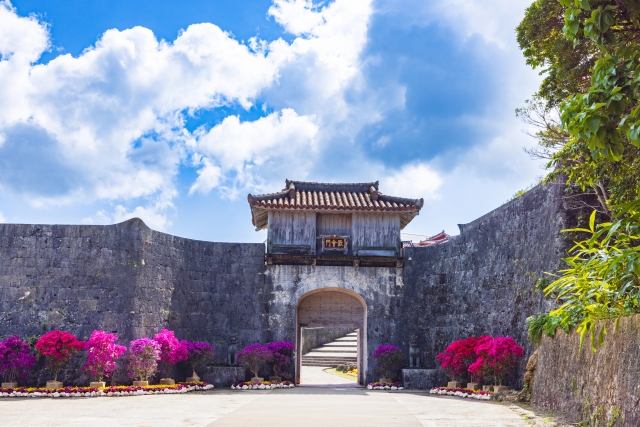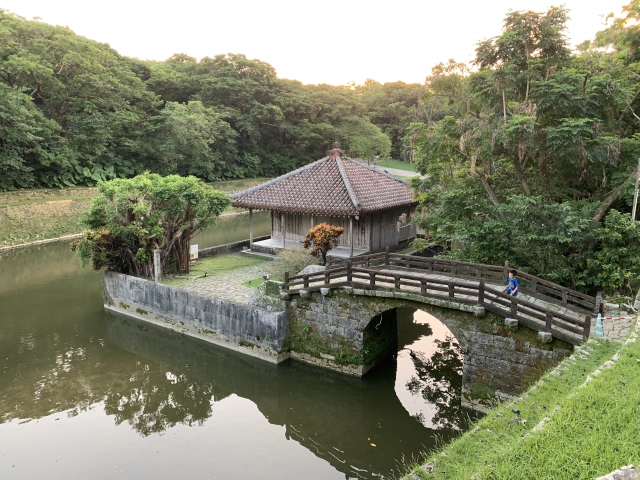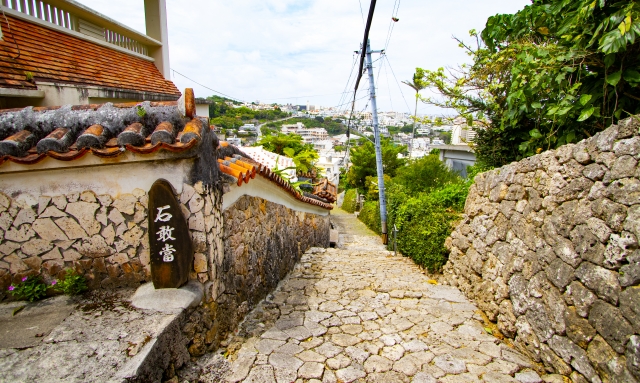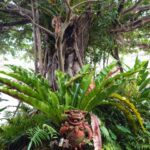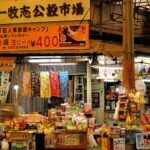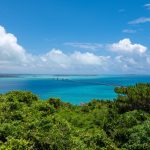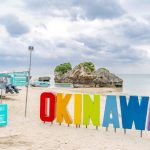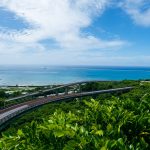When it comes to must-visit spots for sightseeing in Okinawa, Shurijo Castle is at the top of the list for many travelers.
Designated as a UNESCO World Heritage Site under the name “Gusuku Sites and Related Properties of the Kingdom of Ryukyu”, its Shureimon Gate is even depicted on the 2,000 yen banknote.
This time, we’ll introduce Shurijo Castle Park and nearby recommended sightseeing spots.
- Shureimon Gate
- Kankaimon Gate
- Benzaitendo & Enkankei Pond
- Tamaudun Mausoleum
- Shurikinjocho Stone Pavement Path
- Great Akagi Trees of Shurikinjocho
- Zuisen Distillery
- Ryukyu Sabo Ashibiuna
- Bingata & Coral Dyeing Studio Shuri Ryusen
- Bukubuku Tea Specialty Shop: Koto Shuri Kari
- For sightseeing in Okinawa, use GOGO Car Rental!
Shureimon Gate
If you visit Shurijo Castle Park, this is a spot you absolutely can’t miss.
It’s famously depicted on the 2,000 yen bill, and many people associate Shurijo Castle with the Shureimon Gate.
The gate’s design incorporates architectural techniques from Chinese *pailou* style.
The inscription “守禮之邦 (Land of Propriety)” means “Ryukyu is a nation that values courtesy.”
Although it is a gate, it has no doors, and its open, dazzling design is something you should see in person.
Kankaimon Gate
Shureimon is not the actual main gate of Shurijo Castle—the real main gate is Kankaimon Gate.
The word “Kankai” means “welcoming and joyfully meeting,” symbolizing the hospitality extended to guests of the castle.
The gate is made of stone in an arch shape, with guardian lion statues (*shisa*) on both sides to ward off evil spirits.
It is surrounded by stone walls, giving it a unique atmosphere.
Benzaitendo & Enkankei Pond
North of Shurijo Castle, on a small island built in the Enkankei Pond outside the castle walls, Benzaiten, the water goddess who protects safe voyages, is enshrined.
The bridge connecting the island to the shore, Tennyo Bridge, is a nationally designated Important Cultural Property.
It has a miniature garden-like feel, making it a great stop for anyone wanting to take picturesque photos for social media.
Tamaudun Mausoleum
This royal mausoleum was built by King Shō Shin, the third king of the Second Shō Dynasty, to enshrine his father, King Shō En.
It is divided into three chambers—East, Middle, and West—with intricate decorations including the royal crest of the Shō family. The mausoleum area spans 2,442 square meters.
It is the first structure in Okinawa to be designated as a National Treasure.
Stones from its original construction in 1501 remain, and even bullet marks from the Battle of Okinawa are still visible, allowing visitors to feel the flow of history.
Shurikinjocho Stone Pavement Path
These stone pavements, maintained during the Ryukyu Kingdom era, were once main roads.
The paving technique used is called “midare-jiki,” where Ryukyu limestone stones about 20–30 cm are laid in an irregular pattern.
The stone path is beautiful, but since it’s sloped and uneven, be sure to wear comfortable walking shoes.
Great Akagi Trees of Shurikinjocho
Located near the stone pavement, these trees are over 300 years old and designated as a national natural monument. While they are near authentic awamori distilleries, you’ll also find liqueurs made with shikuwasa, black tea, and brown sugar—perfect for alcohol lovers.
Just a few minutes from Shurijo Castle Park, you can learn about how awamori is made—and even taste it!
This area is also popular as a power spot where you can feel the energy of nature.
The Akagi trees are considered sacred and enshrined at the Uchikanagusuku Utaki, so please be respectful when visiting.
Zuisen Distillery
They offer authentic awamori, as well as liqueurs made with shikuwasa, black tea, and brown sugar.
If you’re a fan of alcohol, this is a must-visit spot.
Just a few minutes from Shurijo Castle Park, you can not only learn how awamori is made but also enjoy tastings.
Ryukyu Sabo Ashibiuna
If your feet are tired from walking and you need a break, why not soak in the atmosphere of the Ryukyu Kingdom at “Ashibiuna”?
This is a traditional Okinawan house built right after the war on the grounds of the Misato Palace, which used to be the residence of a high-ranking official called Sanshikan.
Enjoying Okinawa soba while relaxing in the beautifully maintained garden and old house is highly recommended.
Bingata & Coral Dyeing Studio Shuri Ryusen
A workshop of traditional Okinawan crafts like *bingata* and coral dyeing.
Many items for sale feature delicate, vibrant designs, making them great gifts.
Besides selling products, they offer hands-on dyeing experiences—even for kids aged 3 and up, making it fun for families visiting Okinawa.
You can dye your tote bag or T-shirt, so why not create your unique souvenir in the world?
Bukubuku Tea Specialty Shop: Koto Shuri Kari
Bukubuku tea is a traditional celebratory tea from about 600 years ago, once served at royal palace feasts during the Ryukyu Kingdom era.
It’s made by pouring roasted rice water and tea into a bowl and whisking it to create a frothy foam, which is sipped like eating bubbles.
There are various flavors such as genmai sanpin tea, goya, and hibiscus.
Whisking your bukubuku tea makes for great Instagram photos too!
Be sure to stop by if your feet are tired from exploring Shuri.
For sightseeing in Okinawa, use GOGO Car Rental!
To explore Okinawa efficiently and enjoyably, renting a car is the way to go.
Buses can be slow to access attractions, and taxis can be expensive.
With rental cars, you can save on costs and enjoy the freedom to explore off the beaten path—perfect for getting the most out of your Okinawa trip.
Shurijo Castle Park is located far from monorail stations, so visiting by rental car makes sightseeing much smoother.
The most recommended choice is GOGO Car Rental.
They offer various plans, including free drop-off and fuel-efficient hybrid cars.
You can also get discounts by booking online, making it a cost-effective option!


